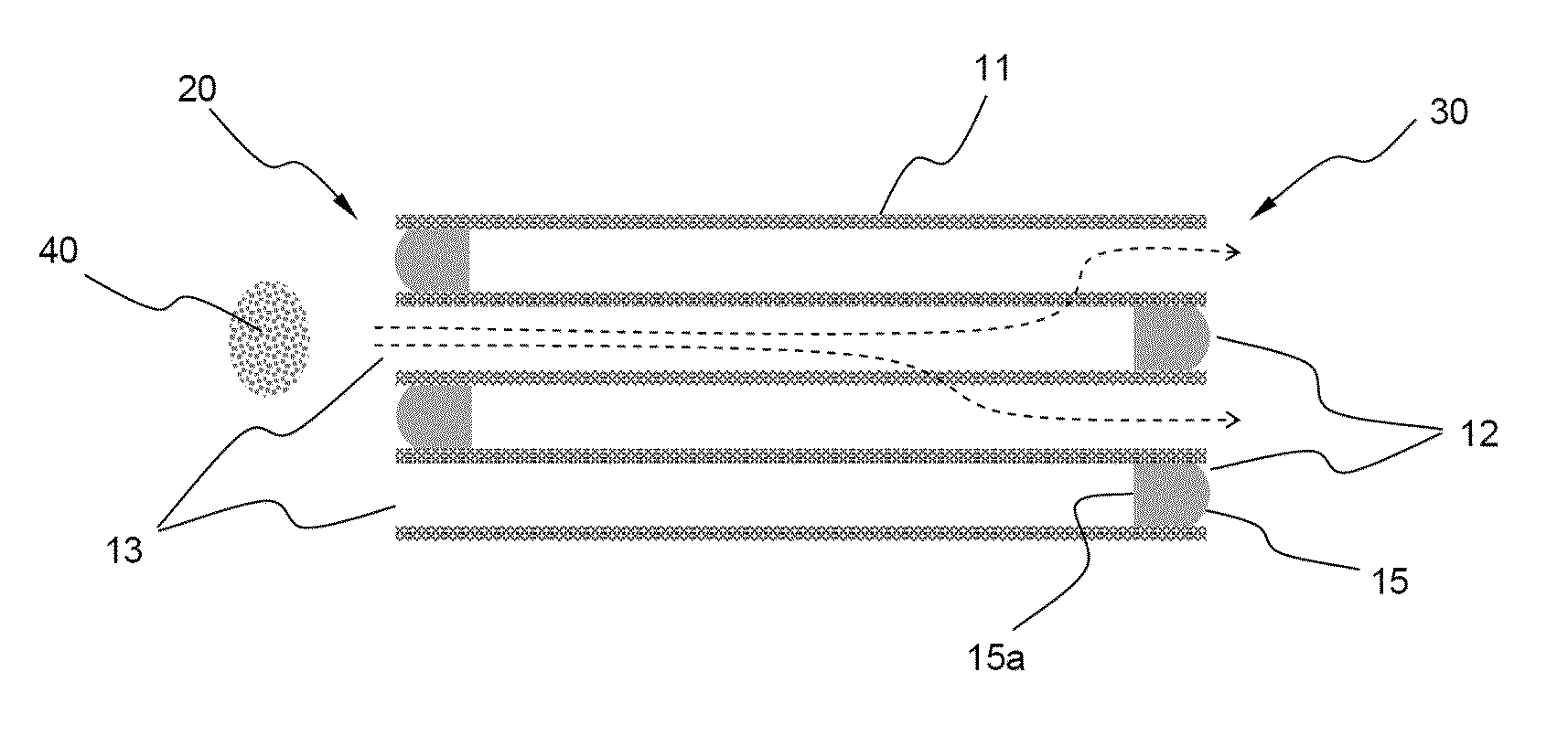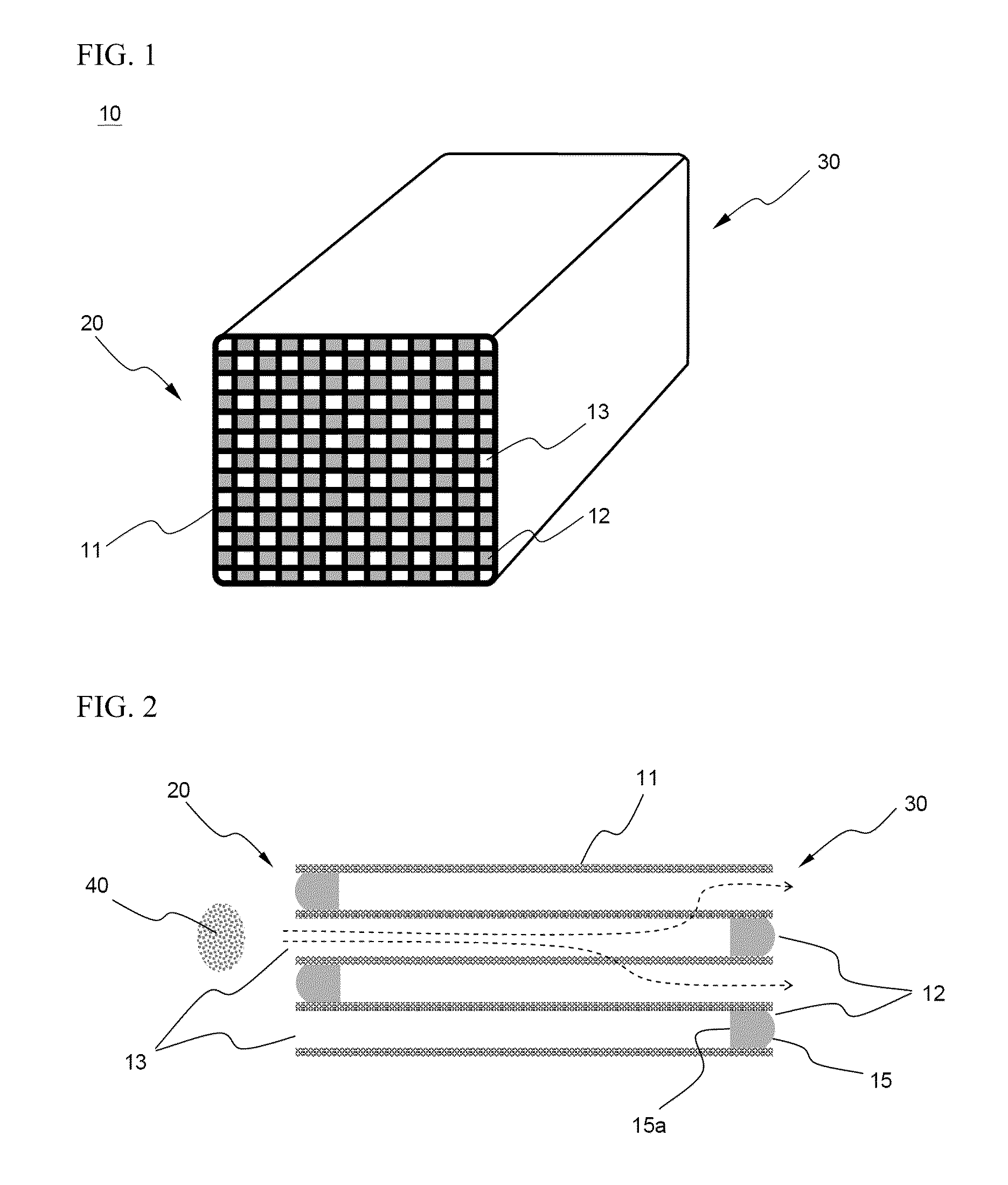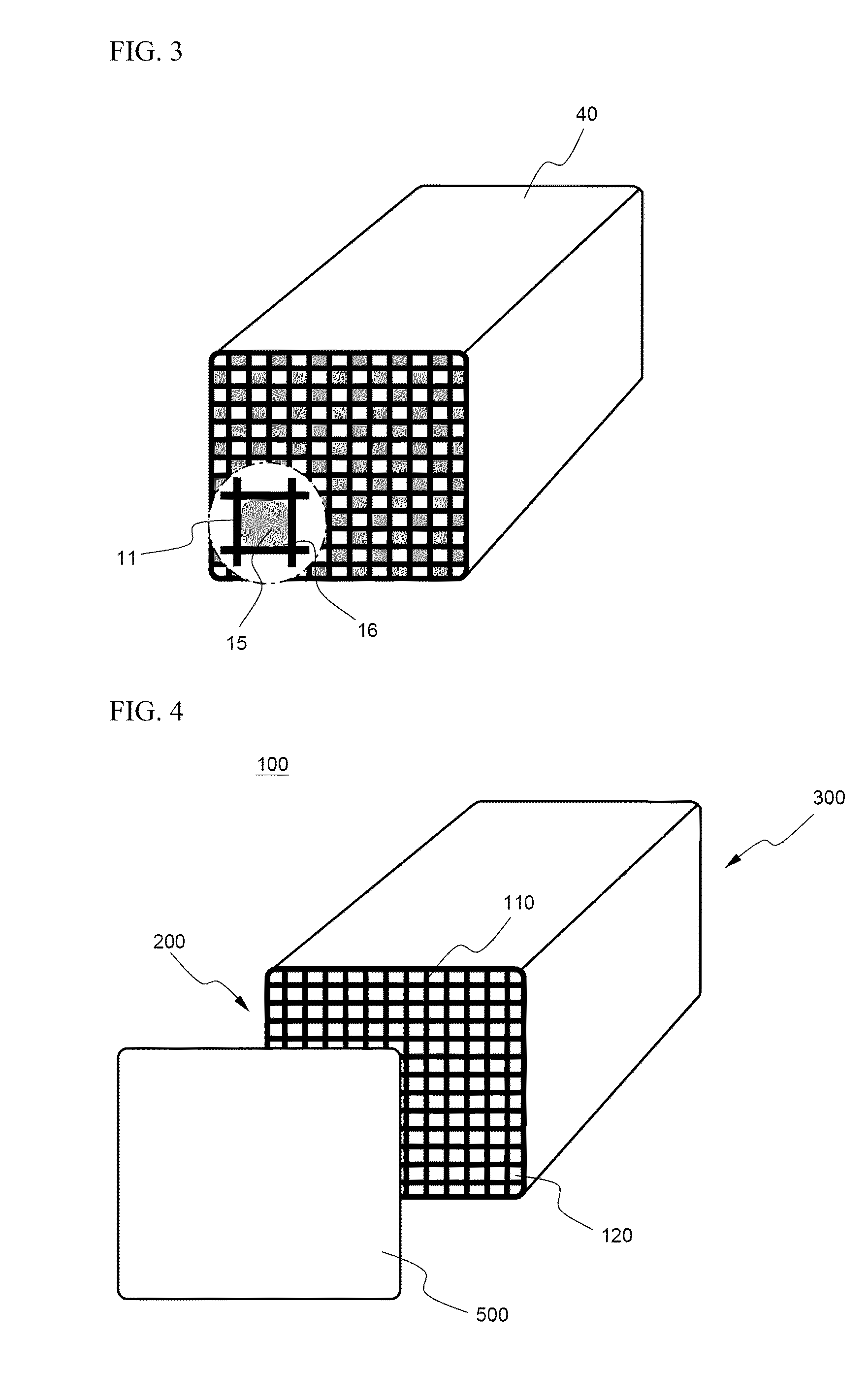Process for preparation of silicon carbide segment for honeycomb ceramic filter
- Summary
- Abstract
- Description
- Claims
- Application Information
AI Technical Summary
Benefits of technology
Problems solved by technology
Method used
Image
Examples
Embodiment Construction
[0027]The present invention provides a method for preparing a silicon carbide segment for a honeycomb ceramic filter as a diesel particulate filter (DPF) by conducting drying, perforating, plugging, and sintering processes for an extruded body cut into a segment having a predetermined size, wherein a material (sealant), which will melt and adhere to corners of cells in the sintering process, to seal the cell corners, is applied to partition walls of the segment at opposite ends of the segment in the plugging process.
[0028]In accordance with this method, plugging is reliably achieved even at the corners of the cells. Accordingly, it is possible to enhance the bonding force between each plug and the associated partition walls while preventing a phenomenon that particulate matter or dust is leaked due to insufficient filling of the plugging material, namely, a miss plugging phenomenon, and thus to minimize the amount of gas discharged without being filtered. Thus, the present invention...
PUM
| Property | Measurement | Unit |
|---|---|---|
| Thickness | aaaaa | aaaaa |
| Structure | aaaaa | aaaaa |
| Size | aaaaa | aaaaa |
Abstract
Description
Claims
Application Information
 Login to View More
Login to View More - R&D
- Intellectual Property
- Life Sciences
- Materials
- Tech Scout
- Unparalleled Data Quality
- Higher Quality Content
- 60% Fewer Hallucinations
Browse by: Latest US Patents, China's latest patents, Technical Efficacy Thesaurus, Application Domain, Technology Topic, Popular Technical Reports.
© 2025 PatSnap. All rights reserved.Legal|Privacy policy|Modern Slavery Act Transparency Statement|Sitemap|About US| Contact US: help@patsnap.com



